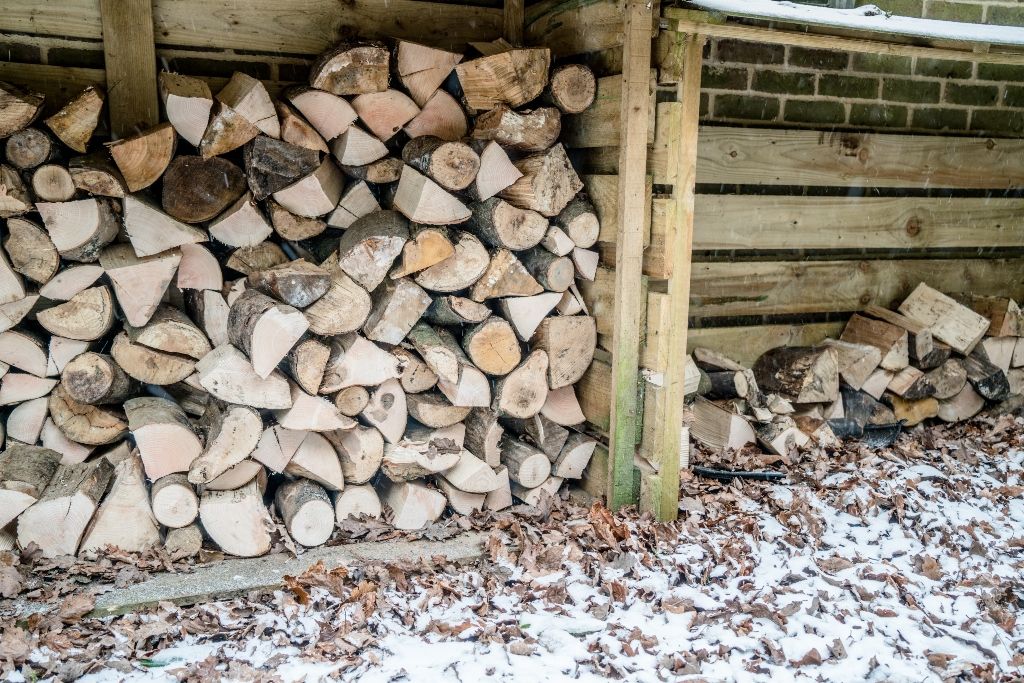


The answer is all about heat. You want your fire to burn as hot as possible and give off the maximum amount of heat.
The hardwood species we use to make our logs are very dense and whilst that means they take longer to season, once seasoned they burn hotter and longer.

Ash, Beech, Cherry, Oak and Silver Birch.

We have an Ash plantation here at Home Farm which was planted some 40 years ago. We also source timber from our local network of forestry professionals including the Englefield Estate.
This ensures a local product with the minimum amount of road miles

Seasoned means dry. You want to be burning logs with a moisture content below 20%. We can achieve that using our seasoning process in about 12 months.

Once the timber is felled it is stacked in a field at Home Farm.
The sooner the timber is split in to logs the quicker the logs will dry. As soon as we have a dry spell we start processing the logs.
Once the timber has been turned into logs we store the logs in our ventilated log bags.
Each ventilated bag holds 1 cubic metre of loose logs (1m3 ) and importantly the netted material which the bags are made from continues to allow air to circulate round the logs meaning that they continue to dry.
We then stack the ventilated bags on pallets in our barn. The use of pallets further helps with the continuous flow of air round the logs which speeds the seasoning process.

All firewood should be sold by volume and not weight. Wet logs weigh a lot more than dry logs so of course it does not make sense to buy logs according to the weight of a load. Please ensure that you understand the volume of logs you are buying correctly.
There are a number of suppliers selling logs in ‘builder dumpy bags’ and implying that that equates to a cubic metre (1m3 ). It is not, a standard builder’s dumpy bag will in fact have a volume of less than 0.75m3 of loose logs. We sell our logs in cubic metre bags.
The dimensions of our ventilated log bags are 87cm x 116cm x 100 cm giving a volume of 1m3. As the logs are loose in the bag we sell our logs by the ‘cubic metre of loose logs. If you order more than 1m3 we will tip the logs from each bag into our tipper trailer at Home Farm and then deliver them to you in our tipper trailer.